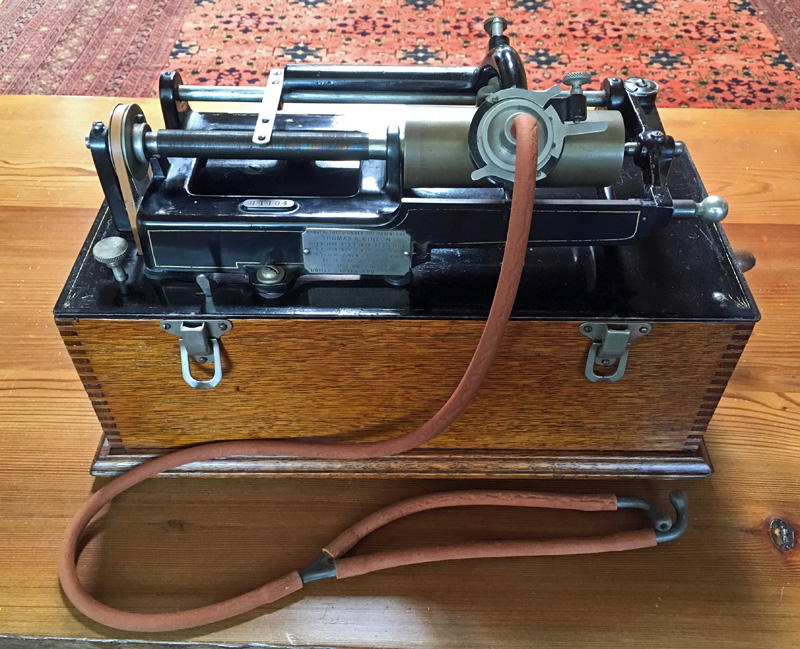

The Edison Home Phonograph was very aptly named -- an early machine intended
for widespread use in American homes. Previously the cumbersome Class
M had been made primarily for business use, and although the 1895 Spring Motor
phonograph was intended for home entertainment the heavy size and high price discouraged
most potential buyers. The Home Phonograph with its small single-spring motor was
first offered in late 1896, priced at $40 -- a significant sum at the time, but within
reach of middle class families. The price later dropped to $30, and it proved to
be a popular and durable seller with over 400,000 sold during the next 20 years.
The
first few hundred Homes used a small and very underpowered clock motor. This
was soon replaced with a more substantial spring motor, which differs from later
Homes in many details. The top casting was initially made with
an opening under the feedscrew but this was soon changed to a solid casting, making
these "skeletal" Homes, as they are known among collectors, very hard to
find. This machine dates to June 1897 and has several features that are unique to
the earliest Homes, notably the small rest cast into the topworks to support the
reproducer lift lever when the machine was not in use, an unusual notch in the opening
for the on/off switch, firmly holding the lever in position, brass governor balls,
and the crank handle with a plate marked "National Phonograph Co." These
details were discontinued by the end of 1897. It lacks the Edison signature trademark,
which was first used at around serial number 2100. The all-brass mandrel is yet another
early featureóby 1898 Edison Homes had nickel-plated mandrels.



The arrow shows the small 'finger' in the topworks casting designed to hold the reproducer carriage above the record when at rest. This was a completely unnecessary feature since the reproducer could readily be raised by simply lifting up the lever. Consequently the cast support was eliminated after about the first 1500 Homes.
